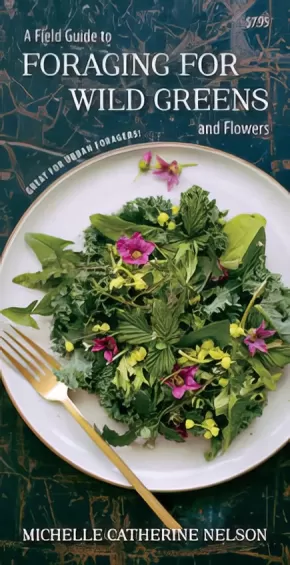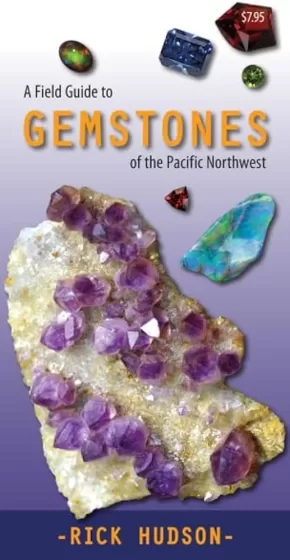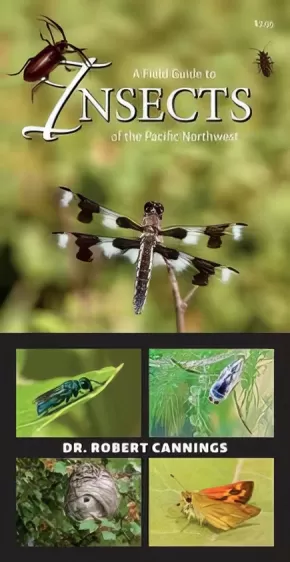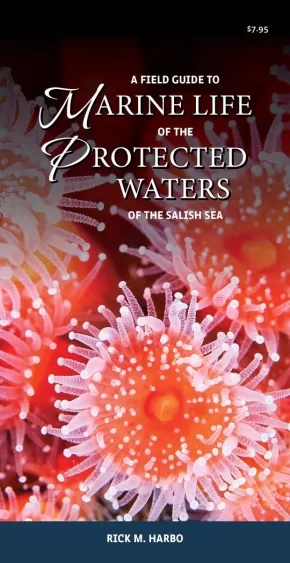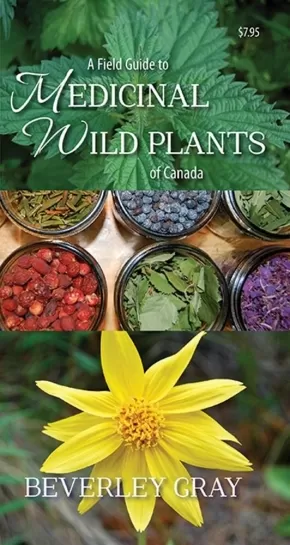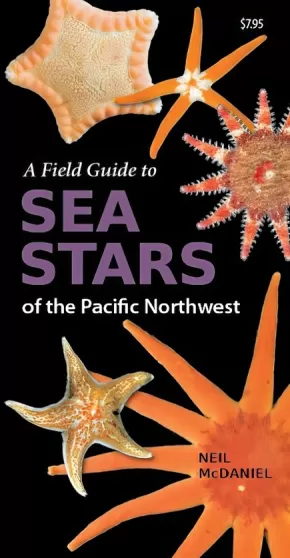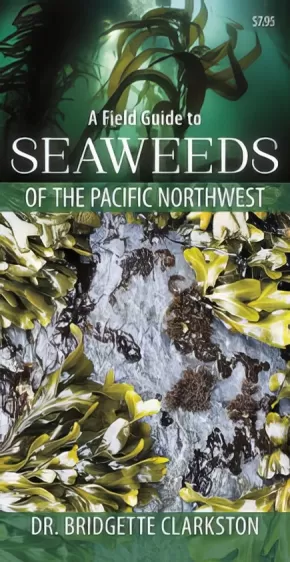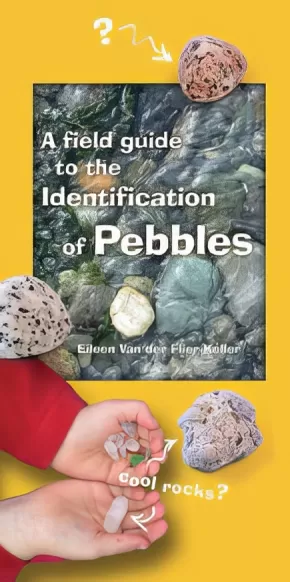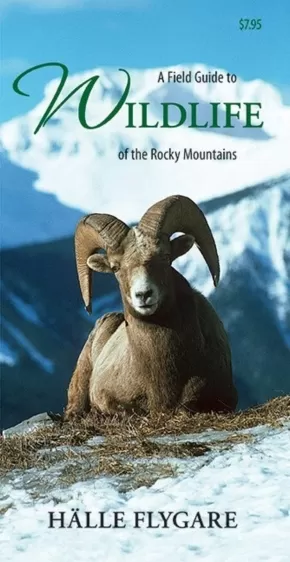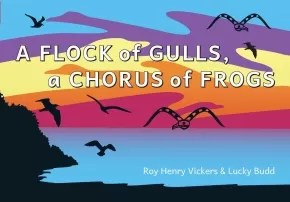
English
Books (13)
A Field Guide to Edible Mushrooms of the Pacific Northwest
$9.95
Format:
Pamphlet
ISBN / Barcode: 9781550175424
Synopsis:
Synopsis:
A Field Guide to Edible Mushrooms of the Pacific Northwest is a waterproof pocket-sized guide with full-colour photographs of mushrooms from Pacific Northwest trails and roadsides, forests and lawns. With this guide, identify over thirty common and easily-recognized edible mushrooms--and stay away from their not-so-edible look-alikes. Discover boletes, chanterelles, matsutake, shaggy mane, cauliflower, candy cap and many other tasty wild mushrooms. Easy to use and light to carry, this compact text is a must-have for all mushroom lovers who delight in searching for the next macrofungi bonanza.
Additional Information
2 pages | 37.00" x 9.00" | waterproof, pocket-sized guide with 50+ colour photographs
A Field Guide to Foraging for Wild Greens and Flowers
$8.95
Format:
Pamphlet
Reading Level: N/A
ISBN / Barcode: 9781550176872
Synopsis:
Synopsis:
A Field Guide to Foraging for Wild Greens and Flowers pinpoints easy-to-find greens and flowers that many don't realize are edible--such as dandelion, clover, chicory, sheep's sorrel and lamb's quarters--and also introduces readers to the delicious leaves of such native plants as goldenrod and fireweed. And readers can also eat their way to conservation by enjoying edible invasive plants in salads, like garlic mustard and fennel. A lightweight pamphlet that will easily fit into a purse or back pocket, this laminated guide will turn every walk from the bus stop, backyard ramble or stroll around the neighbourhood into a fun foraging expedition.
Additional Information
2 pages | 4.60" x 8.80"
A Field Guide to Fossils
$7.95
Artists:
Format:
Pamphlet
Reading Level: N/A
ISBN / Barcode: 9781550179101
Synopsis:
Synopsis:
From dinosaur bones to petrified wood and from primordial seashells to archaic oddballs, this handy field guide makes identification of fossils a cinch. Learn how to identify a fossil and discover the most up-to-date tips on where and when to hunt for them. Featuring gorgeous full-coloured photos and paired with short and informative descriptions, this field guide is suitable for fossil enthusiasts of all ages and skill levels. Lightweight and pocket-sized for convenience, A Field Guide to Fossils is easy to grab and toss into any fossil lover’s backpack on their next adventure.
Additional Information
2 pages | 37.00" x 9.00" | 65 colour photographs | Pamphlet
A Field Guide to Gemstones of the Pacific Northwest
$7.95
Format:
Pamphlet
Reading Level: N/A
ISBN / Barcode: 9781550175097
Synopsis:
Synopsis:
This full-colour, laminated field guide is your introduction to the beauty and wonder of the gemstones found in the Pacific Northwest, a region famous for its variety and quality of earth treasures.
From purple amethyst, carnelian, chalcedony, black and white onyx and emeralds to sodalite, sapphire and many more valuable stones--discover what lies in the rich geology just below your feet. This convenient brochure will help you to develop a keen eye for spotting gems in the rough and become more knowledgeable about local gemstones that are the equal of any in the world.
Additional Information
2 pages | 37.00" x 9.00" | colour photographs | pamphlet
A Field Guide to Insects of the Pacific Northwest
$8.95
Format:
Pamphlet
Reading Level: N/A
ISBN / Barcode: 9781550178340
Synopsis:
Synopsis:
Insects are all around us, from the butterflies in our gardens to the mosquitoes in the woods. About 80 percent of the 1.5 million named species of animals on earth are insects. Without flower-loving bees, wasps, flies and beetles, most crops and wild plants would not be pollinated and would disappear.
But insect diversity is largely invisible because most insects are small and difficult to recognize and identify. They are often easy to ignore.
A Field Guide to Insects of the Pacific Northwest is a durable, water-resistant eight-fold field guide that describes more than sixty of the most common species that are likely to be encountered in the many habitats of the Pacific Northwest. Full-colour macro photos of specimens in their natural habitats accompany handy descriptions with information on specific species’ anatomy, identification and importance in the ecosystem. Readers will be fascinated by interesting (and occasionally gruesome) facts about the insect inhabitants of the Pacific Northwest—for instance that the robber fly injects its insect prey with a fluid that dissolves muscles and organs before sucking their prey dry like a milkshake.
The species in A Field Guide to Insects of the Pacific Northwest have been expertly chosen to introduce the diversity of insect life while also being accessible to novice bug enthusiasts. Most species shown are common but not necessarily familiar. The selection represents nineteen major groups, or orders. The largest are Coleoptera (beetles), Diptera (true flies), Hymenoptera (wasps, bees and relatives) and Lepidoptera (moths and butterflies). These groups are broken down into smaller families, such as scarab beetles or sphinx moths.
A Field Guide to Insects of the Pacific Northwest showcases the amazing diversity of insects that the region holds, and will encourage curious readers to learn a little about the main groups of insects and the intriguing details about their lives.
Additional Information
2 pages | 37.00" x 9.00" | 65 Colour Photographs | Pamphlet
A Field Guide to Marine Life of the Protected Waters of the Salish Sea
$7.95
Format:
Pamphlet
Reading Level: N/A
ISBN / Barcode: 9781550178531
Synopsis:
Synopsis:
A Field Guide to Marine Life of the Protected Waters of the Salish Sea includes the most commonly observed species in the tide pools and protected waters of the Salish Sea—that intricate network of coastal waterways spanning southern BC and northwestern Washington. Covering invertebrates, fish and seaweeds, this guide includes key identification features, fun facts and habitat, as well as seventy colour photographs. Water-resistant and compact, this guide is easy to pack on any trip to the shore and perfect for curious minds of all ages.
Rick Harbo is one of the Pacific Northwest’s leading marine writers and photographers.
Additional Information
2 pages | 37.00" x 9.00" | 75 photographs | Pamphlet
A Field Guide to Medicinal Wild Plants of Canada
$8.95
Format:
Pamphlet
Reading Level: N/A
ISBN / Barcode: 9781550176032
Synopsis:
Synopsis:
Nature heals! This compact field guide introduces readers to 26 common Canadian wild plants with extraordinary healing properties. Use arnica blossoms to heal muscle inflammation, improve digestion with chickweed and soothe a toothache with yarrow root--learning to identify and use wild medicinal plants is both fascinating and useful.
Each plant profile includes a colour photograph, identification and habitat information, as well as medicinal, cosmetic and culinary uses. Skilled herbalist Beverley Gray also includes tips on how to sustainably gather and safely use beneficial wild plants.
Additional Information
2 pages | 4.50" x 8.70" | 30 photographs | Pamphlet
A Field Guide to Sea Stars of the Pacific Northwest
 $7.95
$7.95

Format:
Pamphlet
Reading Level: N/A
ISBN / Barcode: 9781550175134
Synopsis:
Synopsis:
Sea stars are amongst the most common and conspicuous invertebrates that thrive in the rich waters of the Pacific Northwest, from northern California to southeast Alaska. Worldwide there are more than 2,000 different species, but no other temperate region has a greater variety and abundance of these colourful and often very large echinoderms, which are closely related to sea urchins, sea cucumbers, brittle stars and feather stars. An underwater photographer, journalist and naturalist with over 40 years of diving experience, Neil McDaniel provides many original field observations to accompany his remarkable images of these fascinating animals.
This durable, water-resistant 8-fold field guide describes how to identify more than 30 species likely to be encountered by beach walkers and scuba enthusiasts in the Pacific Northwest. It also provides intriguing details about their behaviour, including how they move about, hunt for prey, reproduce and avoid predators. It is an ideal companion for family explorations to the sea shore, an invaluable reference in any scuba diver's kit bag and a useful addition to the home library.
Additional Information
2 pages | 3.21" x 8.92" | Pamphlet
A Field Guide to Seashells and Shellfish of the Pacific Northwest
$7.95
Format:
Pamphlet
Reading Level: N/A
ISBN / Barcode: 9781550174175
Synopsis:
Synopsis:
There are few more enjoyable ways to spend a relaxing afternoon than at the seashore collecting ornate seashells. But there is no need to fly away to some exotic tropical locale to begin the fun. If you are in the Pacific Northwest, you will find local beaches as rich in fascinating treasures as any place on earth--or at least you will once you have this handy eight-fold guide to show you where to look and how to identify what you find. Those whose interest in shellfish is mainly gastronomic will also find this waterproof guide an essential tool.
Additional Information
2 pages | 4.54" x 8.90" | 8 fold laminated pamphlet | 2 Pages
A Field Guide to Seaweeds of the Pacific Northwest
$7.95
Format:
Pamphlet
Reading Level: N/A
ISBN / Barcode: 9781550177039
Synopsis:
Synopsis:
Rich in nutrients, used in products from cosmetics to explosives to fertilizers, and vital to our coastal marine ecosystems, seaweeds can be found on any rocky shore or beach in the Pacific Northwest. The pocket-sized Field Guide to Seaweeds of the Pacifc Northwest is packed with full-colour photos and information on a select variety of the most important and interesting seaweeds commonly encountered on the West Coast. Whether you want to identify seaweeds, better understand their role in the ocean, forage for food, collect for art or you're just plain curious as you poke around the seashore, this educational guide is your ultimate source for casual phycological fun.
A Field Guide to the Identification of Pebbles
$8.95
Format:
Pamphlet
Reading Level: N/A
ISBN / Barcode: 9781550173956
Synopsis:
Synopsis:
Have you ever been walking at the beach and wondered what that pebble or rock is, or do you ever wonder what stories rocks tell? If so, then this is the guide for you.
The Field Guide to the Identification of Pebbles is a full colour, laminated, accordion folded, easy-to-use guide with over 80 beautiful photographs of pebbles from beaches and rivers. Use the photos to identify over 28 different types of rocks and minerals. A great resource for Earth Science curriculum units in schools, the short text deals with how rocks form and how to tell if a rock is igneous, sedimentary or metamorphic. It also provides some fun facts about minerals in our daily lives.
Educator Information
This field guide is available in French: Guide pratique d'identification des cailloux
Additional Information
2 pages | 4.40" x 9.00" | colour photos
A Field Guide to Trees of the Pacific Northwest
$7.95
Format:
Pamphlet
Reading Level: N/A
ISBN / Barcode: 9781550175721
Synopsis:
Synopsis:
This laminated guide features twenty-six native trees commonly found from Alaska to Oregon, providing common and Latin names accompanied by colour photographs of identifying features such as bark, leaves or needles, flowers, cones, seeds and fruit. Information on identification, range and an illustration of each tree's silhouette make it a snap to distinguish a shore pine from a western white pine or a trembling aspen from a paper birch. Also included are traditional uses and other interesting tree facts and lore. For example, did you know that yellow cedar can live up to 5,000 years? Or that the bigleaf maple flowers are edible? Next time you go for a hike, pay attention to the forest and the trees with one of these laminated guides slipped into your back pocket or backpack.
Additional Information
2 pages | 37.00" x 9.00" | color photographs and illustrations | pamphlet
A Field Guide to Wildlife of the Rocky Mountains
$7.95
Format:
Pamphlet
ISBN / Barcode: 9781550176001
Synopsis:
Synopsis:
Was that a lynx or a bobcat? A nuthatch or a chickadee?
A Field Guide to Wildlife of the Rocky Mountains is a must-have for any visitor to the Rocky Mountain region of British Columbia, Alberta, Montana and Idaho.
Featuring over a hundred superb full-colour photos, this pamphlet provides an essential look at the variety of animals one is most likely to encounter on the area's park trails and roadsides. Information on the size of each animal, as well as the common and Latin names makes it easy to identify wildlife. Similar species are grouped by appearance for easy comparison. Handy on the trails, this field guide is also the perfect souvenir of the abundance of wildlife to be found in the Rocky Mountains.
Additional Information
2 pages | 4.60" x 8.80" | 105 Colour Photographs
Teen Books (1)
A Field Guide to Trees of Ontario
$29.99
Format:
Paperback
Reading Level: N/A
ISBN / Barcode: 9780888545299
Synopsis:
Synopsis:
A comprehensive guide to Ontario trees.
From the cherry blossoms ushering in spring to the maple leaves changing colours for fall, our local trees are beloved markers for the changing seasons. A Field Guide to Trees of Ontario is a portal to the hundreds of trees species found in Ontario, published by the Royal Ontario Museum.
Featuring more than 1,400 vibrant photographs and illustrations, this visually rich and inviting field guide describes the trees likely to be encountered in Ontario, whether on a hike in the woods or on a walk down city streets.
Covering both naturally occurring and cultivated species, this book features an illustrated glossary of botanical terms, distribution maps, and photographs depicting distinctive characteristics of individual tree species.
With diagnostic descriptions for quick recognition of trees by their component parts, and easy-to-use identification keys covering summer and winter conditions, A Field Guide to Trees of Ontario is a must-have for tree enthusiasts--novices and experts alike.
Carry it with you wherever you may find trees, which is practically everywhere.
Additional Information
512 pages | 4.50" x 8.00" | Paperback
Kids Books (1)
A Flock of Gulls, a Chorus of Frogs (BB)
$14.95
Format:
Board Book
Text Content Territories:
Indigenous Canadian;
Grade Levels: Preschool;
ISBN / Barcode: 9781990776502
Synopsis:
Synopsis:
Learn fun names for animal groups of the West Coast with a sturdy board book featuring the illustrations of Indigenous artist Roy Henry Vickers.
Bright blocks of colour and tactile embossed pages bring the natural world of the wild West Coast to life. Accompanied by a rhythmic, rhyming text, this board book will entertain babies, toddlers, and adults alike as they discover that orcas leap and dive in a pod, a bunch of sea lions are called a bob, geese make up a wedge, a swamp full of croaking frogs form a chorus, a jumble of jellies are called a bloom—and more!
A Flock of Gulls, a Chorus of Frogs is a vibrant addition to this bestselling, award-winning First West Coast Book series, perfect for storytime and supporting language development in babies and toddlers.
Educator & Series Information
This book is a part of the First West Coast Books series.
Recommended for ages 3 and under.
Additional Information
24 pages | 7.25" x 5.00" | Board Book



